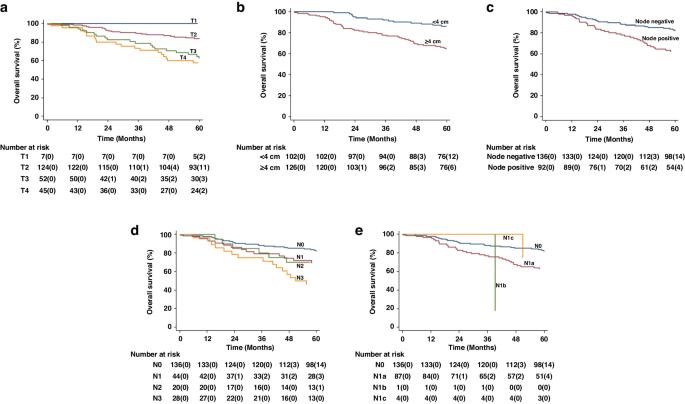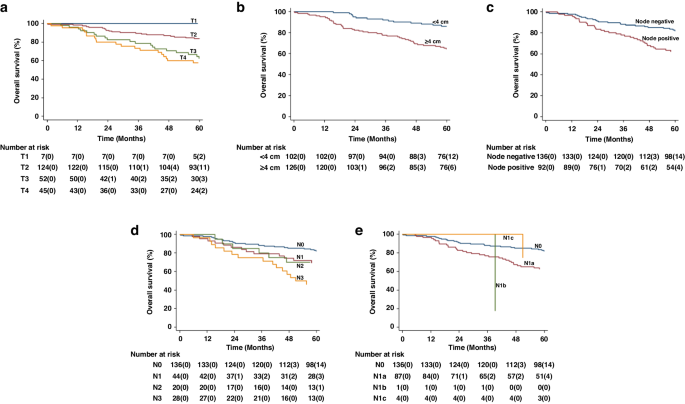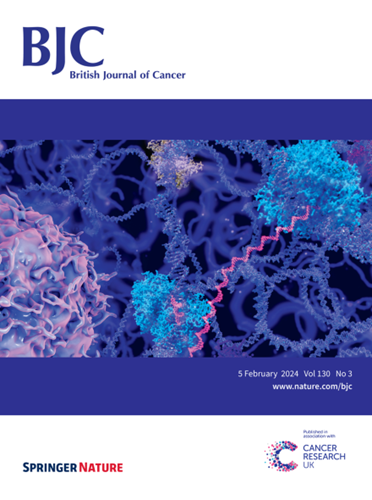Pre-treatment magnetic resonance imaging in anal cancer: large-scale evaluation of mrT, mrN and novel staging parameters
IF 6.4
1区 医学
Q1 ONCOLOGY
引用次数: 0
Abstract
In patients with squamous cell carcinoma of the anus (SCCA), magnetic resonance (MR) imaging is recommended for pre-treatment staging prior to chemo-radiotherapy (CRT), but large-scale evaluation of its staging performance is lacking. We re-characterised pre-treatment MRs from 228 patients with non-metastatic SCCA treated consecutively by CRT (2006–2015) at one UK cancer centre. We derived TN staging from tumour size (mrTr) and nodal involvement (mrN), and additionally characterised novel beyond TN features such as extramural vascular invasion (mrEMVI) and tumour signal heterogeneity (mrTSH). Primary outcomes were 5-year overall survival (OS) and 3-year loco-regional failure (LRF). Time-to-event analyses used Kaplan-Meier estimates; Hazard Ratios (HRs) with confidence intervals (CIs) were derived from Cox models. With a median follow up of 60.9 months, 5-year OS was 74%. Poor OS was associated with increasing mrT (HR: 1.12 per cm [95% CI: 1.07–1.33]), nodal positivity (HR 2.08 [95% CI 1.23–3.52]) and mrEMVI (HR 3.66 [95% CI: 1.88–7.41]). 3-year LRF rate was 16.5%. Increased LRF was associated with increasing mrT (HR: 1.43 per cm [95% CI: 1.26–1.63]), nodal positivity (HR 2.70 [95% CI 1.39–5.24]) and mrTSH (HR 2.66 [95% CI 1.29–5.48]). In SCCA, the study demonstrates that mrT and mrN stages are prognostic, while mrEMVI and mrTSH may be novel prognostic factors.


肛门癌治疗前磁共振成像:大规模评估 mrT、mrN 和新型分期参数。
背景:对于肛门鳞状细胞癌(SCCA)患者,建议在化疗-放疗(CRT)前使用磁共振(MR)成像进行治疗前分期,但缺乏对其分期性能的大规模评估:我们对英国一家癌症中心连续接受 CRT 治疗(2006-2015 年)的 228 例非转移性 SCCA 患者的治疗前 MR 进行了重新定性。我们从肿瘤大小(mrTr)和结节受累(mrN)中得出 TN 分期,此外还描述了 TN 以外的新特征,如壁外血管侵犯(mrEMVI)和肿瘤信号异质性(mrTSH)。主要结果为5年总生存期(OS)和3年局部区域失败(LRF)。时间到事件分析采用卡普兰-梅耶估计值;危险比(HRs)和置信区间(CIs)由Cox模型得出:中位随访时间为60.9个月,5年OS为74%。较差的OS与mrT(HR:每厘米1.12[95% CI:1.07-1.33])、结节阳性(HR 2.08 [95% CI 1.23-3.52])和mrEMVI(HR 3.66 [95% CI:1.88-7.41])的增加有关。3年LRF率为16.5%。LRF的增加与mrT(HR:1.43/cm [95% CI:1.26-1.63])、结节阳性(HR 2.70 [95% CI 1.39-5.24])和mrTSH(HR 2.66 [95% CI 1.29-5.48])的增加有关:该研究表明,在SCCA中,mrT和mrN分期是预后因素,而mrEMVI和mrTSH可能是新的预后因素。
本文章由计算机程序翻译,如有差异,请以英文原文为准。
求助全文
约1分钟内获得全文
求助全文
来源期刊

British Journal of Cancer
医学-肿瘤学
CiteScore
15.10
自引率
1.10%
发文量
383
审稿时长
6 months
期刊介绍:
The British Journal of Cancer is one of the most-cited general cancer journals, publishing significant advances in translational and clinical cancer research.It also publishes high-quality reviews and thought-provoking comment on all aspects of cancer prevention,diagnosis and treatment.
 求助内容:
求助内容: 应助结果提醒方式:
应助结果提醒方式:


